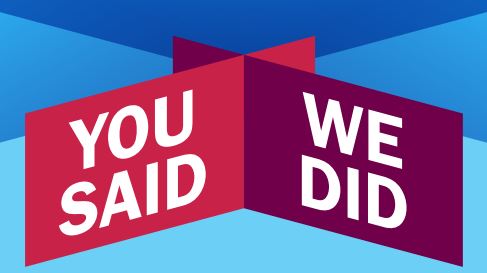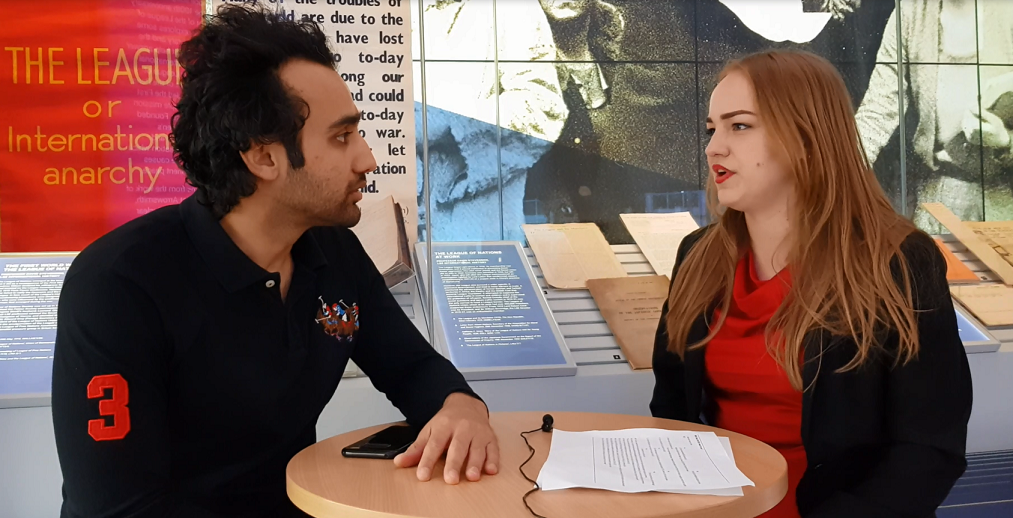There is an abundance of student inputs in UK academia but a dearth of meaningful student voice. That’s no accident, argues LSE HE Blog Fellow Mikołaj Szafrański.
It would be hard to imagine contemporary academic governance without the notion of student voice. The term is treated as a species of student engagement, and also as related to student partnership. On the surface, it contains a straightforward promise: that students possess a distinct ‘voice’ that, if accurately represented, will yield positive impacts in terms of student experience and enhancing the quality of education. Yet, making student voice a reality has been a challenge for anyone involved in the process, from students’ union officials and student representatives to HE administrators and department-level committees. As formal opportunities for pooling student voice are multiplying, a simultaneous deficit of ‘meaningful’ student voice appears widespread. There is talk of knowledge gaps, problems with capture, and of a difficulty with distinguishing individual from collective voice at the stage of interpretation. Concerns extend to views not being considered as truly representative, and inputs not being data-driven. Arguably, UK academia has never seen more student inputs (and coordinated efforts to gather them). How can one then explain the coexistence of an abundance of efforts to represent the students’ perspectives and the problem of scarcity of ‘meaningful’ student voice? In this blog post, I propose to contextualise the discourse about student voice in UK academia by demonstrating, first, how it has emerged as a problem in recent history, and second, how its most common forms fit better with the logic of commodification than with the managerial logic of responsive communication.
20 years of student voice
According to mainstream narratives, the concern with student voice has been prompted by major HE regulatory drivers, such as standardisation of feedback procedures and the nationwide rollout of evaluation surveys. In 2003, the UK government’s Future of Higher Education white paper foreshadowed the creation of a national annual survey to explicitly cover teaching quality. At that time, the introduction of what we know today as the National Student Survey (NSS) was justified in terms of providing students with information “to become intelligent customers of an increasingly diverse provision, and to meet their own increasing diverse needs”. A year later, the Office for an Independent Adjudicator for Higher Education was set up pursuant to the 2004 Higher Education Act to deal with student complaints. In 2007, the Department for Innovation, Universities and Skills launched a Student Listening Programme designed to amplify the student voice in Government, providing, inter alia, for a national student forum to advise policymakers. Since 2012, student voice has also been plugged into the Quality Code for Higher Education prepared by the UK Quality Assurance Agency (QAA). In its guiding principles for student engagement, the QAA recommends universities to set up arrangements “for effective representation of the collective student voice at all organisational levels including decision-making bodies” and “to ensure that the full diversity of student voices can contribute to enhancement and assurance activities”.
While the narrative about regulatory developments can explain why more student voice outputs are collected, it does not account for how these outputs have become utilised in HE governance structures. The 2003 white paper did not foresee that higher education providers would use NSS data in their quality enhancement processes, and, in general, institutions were not originally seen as an audience for the data from the NSS. In contrast, today, the Office for Students admits that the purpose of the survey is not just to inform prospective students’ choices, but also to provide data “that supports universities and colleges to improve the student experience”. The issue of take-up of student voice also surfaced in the design of the Teaching Excellence Framework (TEF) in the mid-2010s. Before the results of the first TEF were published, arguments were raised to give student voice a more prominent place in the Framework, perhaps by involving students in preparing the institutional submission. This was ultimately resolved by inclusion of NSS as a metric of student voice in the Framework.
Feedback as a closed loop
From the perspective of HE administrators, the system of procuring student voice has always operated as a feedback loop: students expressing feedback and universities taking it on board. Student voice is appreciated for its democratic potential and as a policy initiative. The concentration of new technologies for gathering and soliciting student voice for the purpose of embedding it in governance processes – such as students’ union representation, consultative fora, complaints boxes and teaching surveys – has generated the expectation that student voice flows in a closed-loop system. Yet such a representation of student voice flattens it to “a simple sequential exchange, narrowing possibilities for students and staff to come together to engage in more collaborative, open-ended, exploratory ways and deliberative processes to improve or develop courses”.
Metrics, at best, can measure the distance between expectation and delivery, but not quality
Let us proceed with two examples that demonstrate the consequences of construing student voice flows as closed loop exchanges. The ideal contribution of nationwide student surveys has been perceived as a gauge of student contentment about their university experience and education quality. Yet, ascribing single collectible data value to phenomena such as ‘satisfaction’, ‘outcomes’, or ‘teaching quality’ underplays the representation of the relationship between the student and the university. These metrics, at best, can measure “the distance between expectation and delivery”, but not quality. As a result, the material contribution of surveys such as the NSS reveals itself in terms of reputational gain. When metrics are stated in absolute terms, how likely would universities be to refrain from boasting “a 5% year-to-year increase in student satisfaction” in advertising materials or banners on campus? What would be the incentive for the student to share a disapproving opinion on the NSS, when a lower league table ranking would prevent them from stating ‘graduate of a top 10 institution in the country’ on their CV?
In the case of student representation, its value is depicted in terms of potential to involve students in academic governance, and to “collect student feedback via a variety of mechanisms, [for the purpose of] presenting this as constructive feedback to staff”. Yet, practice shows that the contributions of student representatives (reps) are vulnerable to the charge of not being data-driven. As a result, universities can engage in cherry-picking the reps’ unsolicited insights. The reps’ input will be likely attached less weight when discussing matters that warrants a wider and data-driven outreach (such as ‘what would it mean to decolonise our disciplinary curriculum’) and more likely to be consulted on sentiment analysis of their cohort (‘did your colleagues like the puppies that we brought for the wellbeing week’). All in all, the rep system can reduce transaction costs associated with programme delivery, as it lowers the demand for costly feedback gathering mechanisms.
The concurrent production of student voice and deficit of ‘meaningful’ student voice appears not as a bug, but as a systemic feature
The problem with student voice is not just that it is imagined as a loop of ‘simple sequential exchange’. The lack of congruence between the intended or ideal contribution and the material one is indicative of exchange value of student voice overtaking their use value. Student voice is not susceptible to being fully looped since its circulation serves an economic function, and not because it is gathered in technologically suboptimal ways. Introducing the notion of communicative capitalism, Jodi Dean spoke of content circulation as becoming an end in itself, rather than as an end for communicating meaning. The continued circulation of student voice is engineered to generate commodifiable by-products more than it is to match student communication with institutional communicability. If we accept that “communication functions symptomatically to produce its own negation”, the concurrent production of student voice and deficit of ‘meaningful’ student voice appears not as a bug, but as a systemic feature.
New ways of bargaining

Is it possible to find a way out? Halting the circulatory system of student voice would require remaking the historical context which raised the profile of the notion in the first place. There may be no way to go back to pre-student voice times; likewise, tapping into fantasies of finding ‘real’ student voice unmediated by cultural influences may prove a barren end. However, there may be room for finding new ways of bargaining for the students. This may involve tactically limiting engagement in student voice mechanisms to remove the universities’ ability to format relationships according to the ‘you said – we did’ template. In terms of strategy, those interested in transformation of their experience and enhancing education quality might want to pursue courses of action that do not individualise students as ‘voices’ but involve doing things collectively to resist the commodification of yet another aspect of higher education.
_____________________________________________________________________________________________ This post is opinion-based and does not reflect the views of the London School of Economics and Political Science or any of its constituent departments and divisions. _____________________________________________________________________________________________
Main image: Juliana Romão on Unsplash



